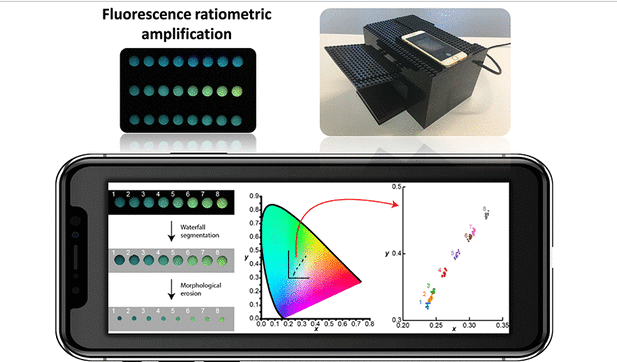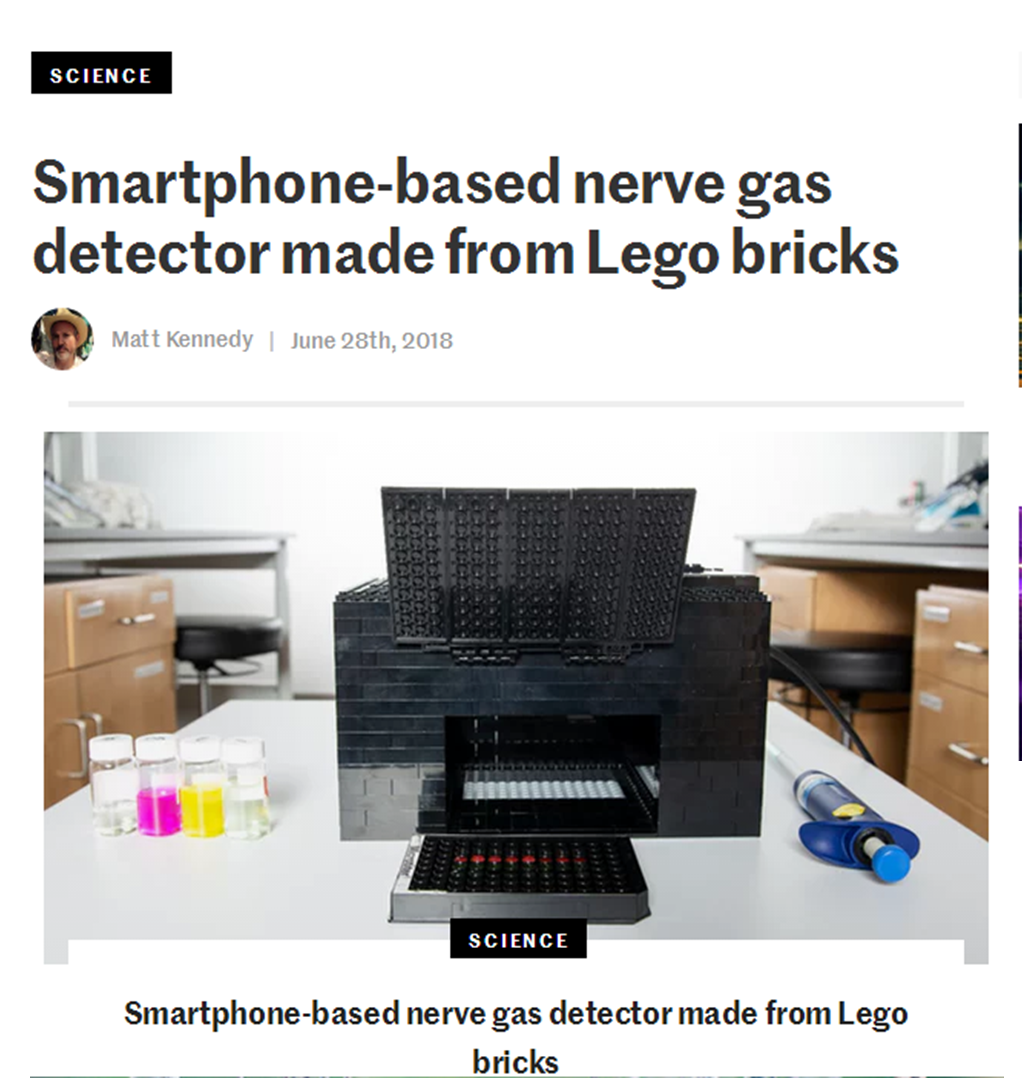New Atlas reported our study cooperated with University of Texas at Austin
Using Lego bricks and regular smartphone, researchers from BEBC, Xi’an Jiaotong University and University of Texas at Austin developed “a simple, affordable and durable chemical weapons detector made out of an iPhone, a UV lamp, a standard 96-well test plate and … a bunch of Lego bricks.” The detecting methodology relies on the optical signal created by the decomposition reaction of the nerve agents. Self-propagating cascades amplify this signal, with the resulting color and intensity being proportional to the type and amount of chemical weapon present.


This work has been published on ACS Central Science
New Atlas reported this achievement on its website. Reviewer regarded this work as “not only detects and quantifies nerve agents at a contaminated site, but it distinguishes between the two primary classes of agent present (G-series and V-series) which require quite different decontamination methods. Something the current tools struggle to do.”

Report on website entitled
"Smartphone-based nerve gas detector made from Lego bricks"
Link for the report:https://newatlas.com/nerve-gas-detector-lego-smartphone/55241/
Link for the article online:https://pubs.acs.org/doi/10.1021/acscentsci.8b00193
- Pre:None
- Next:Professor Hui Wei from Nanjing 2018/7/2
